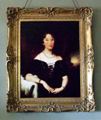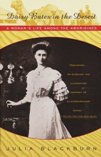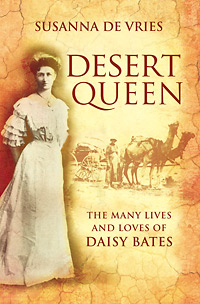
|
Mary Bryant |
Mary Reibey |
Mrs Gidley King |
|---|---|---|
|
Margaret Catchpole |
Mrs Elizabeth Macarthur |
Truganini |
|
Georgiana McCrae |
Caroline Chisholm |
Daisey Bates |
Mary Bryant b1765 dissapeared 1794
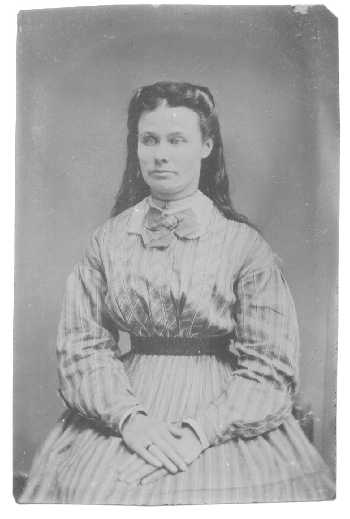
Mary arrived as a Convict at Sydney Cove with the First Fleet. a little later she married William Bryant.
With her husband, children, and some other convicts they stole a rowing boat with the intention of rowing/sailing back to England.Mary's husband and some of the convicts decided to get supplies at Koepang, in Dutch West Timor, (for this section they had been at sea for 69 days) . even China was still a long way away.
Captain Edward Edwards arrived arrived at Koepang with survivors of his wrecked ship the PANDORA, and captured mutineers of the Ship BOUNTY (Captain Bligh). On his return to England he took Mary and other survivors with him home to England.
After reaching England, Mary was sent to Jail, but she engaged in a Court Case to reverse her Convict status. This she acheived with the help of James Boswell, a famous English author.
Whilst the escapees were in Koepang, Captain Watkin Tench, who was awaiting a connecting ship passage, after serving his years as a Marine Officer at Sydney Cove, was aware of her presence. Tench continued in his Marine Service and later reachd tthe rank of Lieutenant General. He also wrote about his experiences in the Colony at Sydney
Mary Reibey b 1777-d1855
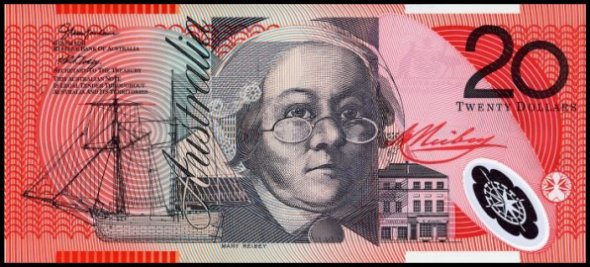
Mrs Gidley King. Wife of 3rd Governor Philip Gidley King b1765 -d1844
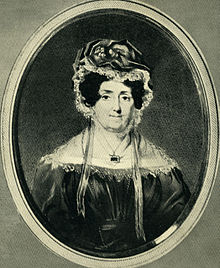
She was the first married woman to be wife of Lt. Governor of Norfolk Island and first married woman to be wife of the Governor of Australia. Over her lifetime she endured 3 voyages to Australia. She also looked after the interests of her husbands illegitimate 2 children born to a convict mother on Norfolk Island. She had as a friend on Norfolk Island the wife of Captain William Paterson.
When her husband was appointed Governor of NSW, she worked for the betterment of the hordes of neglected children on the streets of Sydney and also concerned for the convict women on board ship and when domiciled in Sydney Town; She founded the MRS KING'S ORPHANAGE
Governor Kings poor health resulted in Governor Bligh replacing him as Governor of Australia.
Mrs King fortunately was granted some land out near Penrith, and was able to run a small beef herd. After 24 years in England Mrs. King finally returned to Australia.
Margaret Catchpole b1762 -d1890 at Richmond
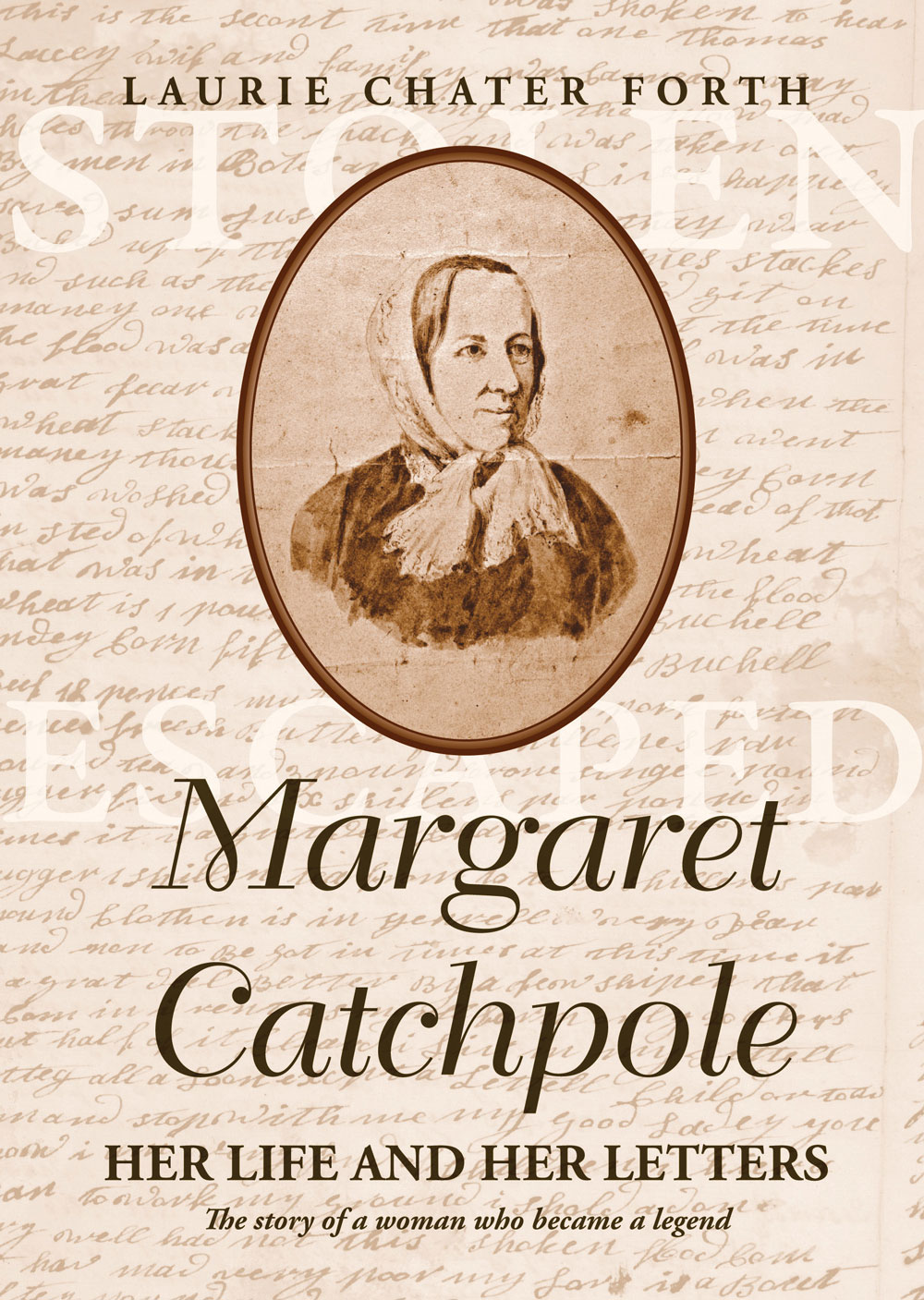
In England, as a young person,Margaret was a strongwilled bit of an uneducated daredevil.
She stole a horse and rode it 110 kms to London. Whilst awaiting in Jail for her sentence to be resolved, she climbed over the Jail walls by using a clothesline. After she was re captured she was sentenced to Transportation to Botany Bay, where she became a servant of John Palmer who had arrived in Australia with the First Fleet as a FREE settler.
She resolved never to marry, and had a seemingly uneventful life. However close inspection of her lfe reveals that she turned her talents and energy to establishing herself. She became an Overseer of a farm--kept a small farm herself, became the "Local" nurse and mid wife in the Hawksbury district. She also diligently worked hard at writing and her own education.
From a very highly strong willed adventurous young woman in England, she turned out to be
one of the first people In Australia to become self sufficient
Elizabeth Macarthur b1766--d1850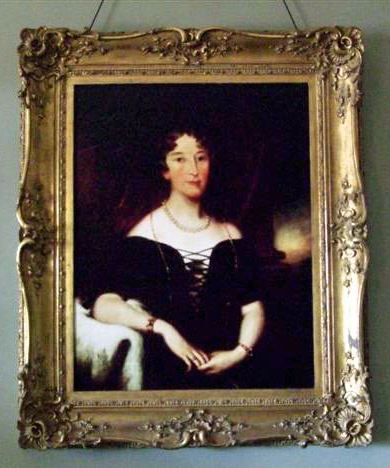
PERHAPS ? The Australian Wool Industry, owes more to Elizabeth Macarthur, than to her husband John Macarthur - Rev. Marsden and John Bigge
She was the first woman of education and sensitivity to arrive at the Colony, and was a friend of Governor Arthur Phillip.
Raising a large Family and having her husband away in England for great lengths of time due to his insurrection part in Governor Bligh's downfall, would have placed enormous strain on running Elizabeth Farm at Parramatta and also overseeing the property at Camden, As pointed out in "I didn't know that series" Her husband John was certainly the Public Relations Man for Australian wool in England, but his instructions were certainly carried out in Australia by his wife, in a most difficult time..
Truganini (Born. 1812 – Died 8 May 1876) was an Aboriginal Tasmanian. Born on Bruny Island, Tasmania.
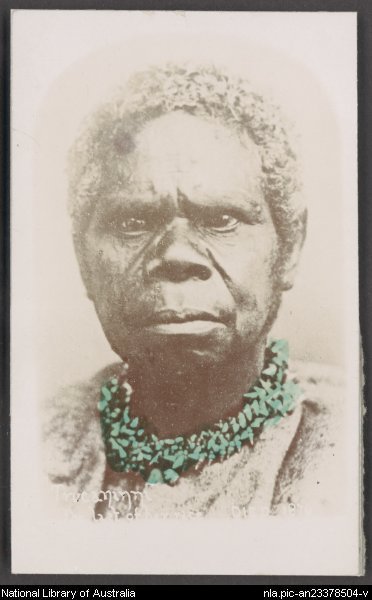
When Truganini met George Augustus Robinson (the Protector of Aborigines) in 1829, Her mother had been killed by sailors, her Uncle shot by a soldier, her sister abducted by sealers, and fiance murdered by timber cutters.
In 1830 Robinson moved Truganini to Flinders Island with the last remaining Tasmanian Aborigines. Abour 100 persons.The aim was to isolate them and so "save" them. In 1838 Truganini helped Robinson establish a settlement for Mainland Aborigines at Port Phillip. She later joined a gang of Aboriginal outlaws. Robbing and shooting settlers around the Dandenong area. the outlawa moved to Bass River and then Cape Paterson, where 2 of her group murdered 2 whalers. After capture and being put on trial she was returned to Flinders Island several months later.
From here on her life was rather confused . But she later died in Hobart and was buried at the former Female Factory at Cascade a suburb of Hobart
Georgiana McCrae b 1804- d1890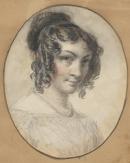
Born in London, she was the illegitimate daughter of George Gordon, 5th Duke of Gordon, and Jane Graham. Her father, although he publicly acknowledged her, played little part in her life as far as can be deduced from Gordon's memoirs. In 1805–07 she spent much of her early days in Scotland.
After marrying McCrae in Scotland, who later emigrated and practised Law, in Melbourne, she became a Squatter's wife on a property near Arthur's Seat on the Mornington Peninsula. She had lived in Melbourne with her growing family before moving to the Arthurs seat property.
At the Arthur's Seat property she was adjudged by fellow Squatters as a very good sheep, cattle and horse drover. She also retained her painting abilities and also entertained "intellectual" people,such as Sir John Franklin, William Charles Wentworth, Henry Kendall and Adam Lindsay Gordon. She was also a close friend of Lieutenant Governor Charles La Trobe and his wife. Possibly women like Georgiana kept alive priciples of Taste and Refinement during the formation of our Colonial History.
Caroline Chisholm. b1808--d1877
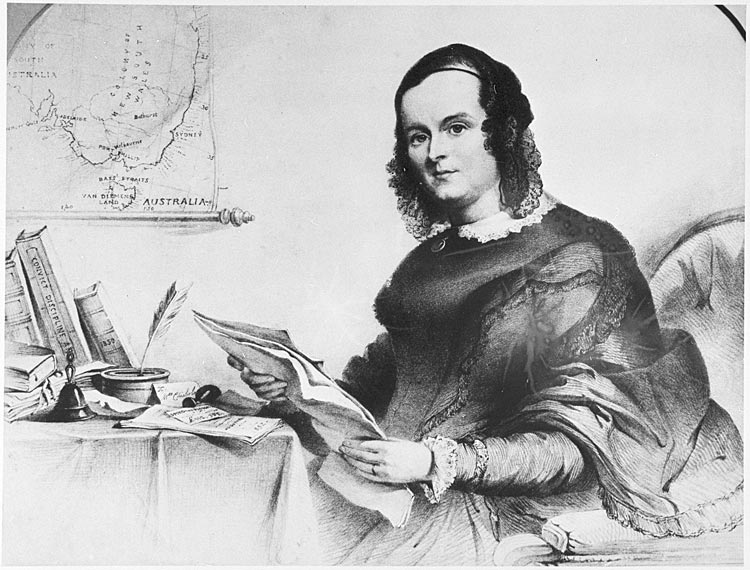
A Dictionary Term11.: PHILANTHROPIC-
1 .Her love of Humankind especially as deeds of practical beneficense
2. A philanthropic action, work, institution, or the like.
She was a progressive 19th Century English humanitarian, known mostly for her work with Female Immigrant Welfare in Australia.
* She was reared in aTradition of Evangelical Philanthropy.
* Her Husband was a Captain in the East India Company. Whist she was based in Madras she founded the Female School of Industry for the daughters of European Soldiers.
* The Chisholms decided to spend leave in Australia. They settled at Windsor NSW.
* Although Australia was slipping into a depression and Rural labour was needed, the Government had no plans for sending the throngs of immigrants from the ships to the outback.. Caroline was granted by Governor Gipps the use of the Old Immigration Barracks for Females to reside in whilst awating employment. She used to greet ships with a sign advertising its presence. Her work was decidedly difficult without much recognition or help in this difficult phase.. Even Charles Dickens in England gave the Society powerful aid and even included Cazroline as Mrs. Jellby in his novel Bleak House. After all her many years of hard work on behalf of Immigrant Females she returned to England. Perhaps her acheivements were made possible by her irrepresable idealism and courage.
|
|
DAISY BATES b1859 d1951
pic required
Was an Irish Australian journalist, welfare worker and lifelong student of Australian Aboriginal culture and society. She was known among the native people as 'grandmother.
Her involvement with the Aboriginal Australians was not as a missionary, doctor or teacher. The foreword of her book written by Alan Moorehead said, " As far as I can make out she never tried to teach the Australians Aborigines anything or convert them to any faith. She preferred them to stay as they were and live out the last of their days in peace.
She married "Breaker" Morant 1884. Then Jack Bates at Nowra in 1895. Then someone else. Finally rejoining Jack Bates at a Cattle Station in North Western Western Australia. In 1904 she was Commisioned by the Government to research and write about Aboriginal languages in WA.
I In 1914 she gave a "Paper" at an Australian Meeting of the British Association for Advancement of Sciences as an Anthropologist and Expert on Aboriginal Life and Customs.
In 1920 (aged 61) she moved to Ooldea in SA.on the Transcontinental Railway Line. She set up a large Tent which she lived, near the Aboriginal encampment, where she lived with brief interruptions for the next 25 years. She led a very puzzling lifestyle, and longed to be accepted as an Anthropolgist and Scientist of Aboriginal studies. . .




